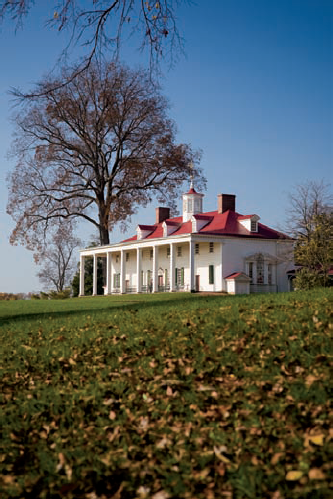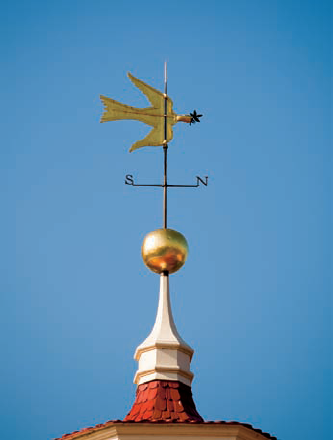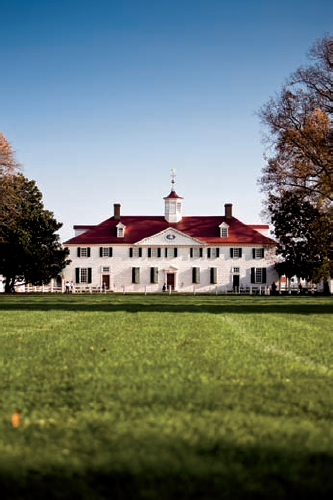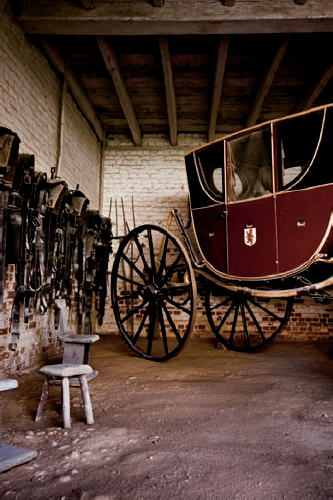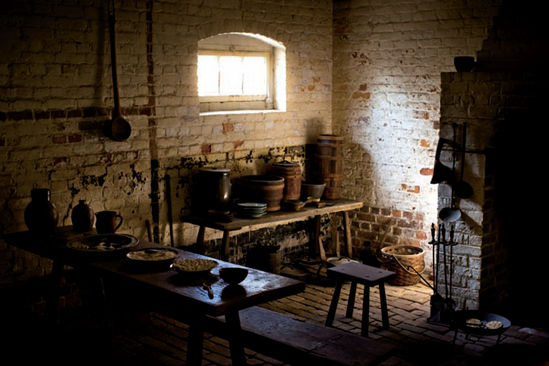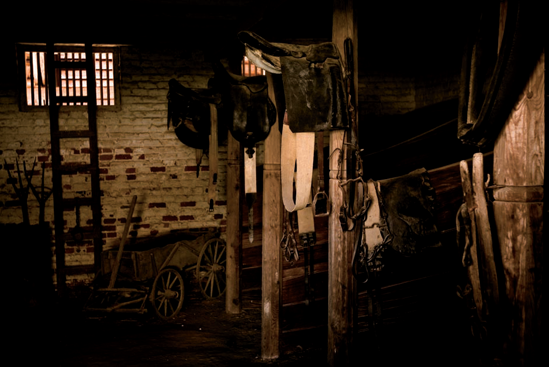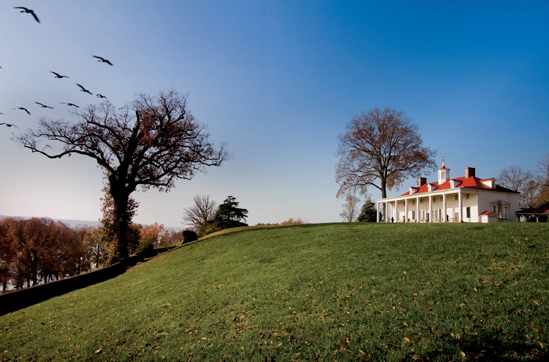
A view from the east side of the Mount Vernon mansion. Taken at ISO 200, f/8,1/100 second using a 20mm lens.
Mount Vernon, George Washington's estate and final resting place, is a few miles down the Potomac River from Washington, D.C.
The area open to the public is where Washington and his family lived, and is called Mansion House Farm. Washington designed the 500 acres to be largely self-sustaining. He began living there when he was just three years old, when Augustine Washington, his father, moved there in 1735.
Washington lived on the property for over 45 years, with the notable exception of his time as the commander in chief of the Continental Army during the Revolutionary War and his time as the first President of the United States.
There is much to see and photograph at Mount Vernon, with one important exception: No pictures are allowed within the mansion. However, after a tour through the intricately restored home, there is enough elsewhere to keep a photographer occupied for several days.
On the east side of the mansion, you can explore a large lawn that is open to the public, and from here you can view the mansion from several nice angles (see figures 8.1 and 8.2).
Because the mansion is east-facing, morning is a good time to photograph from this location.
A popular spot to photograph the mansion is from its western side, across its Bowling Green (see Figure 8.3). Two spots offer good views. One spot is just next to the lawn, or try the field a little farther back. You may see the worn spot where many a tripod has been set — this spot allows you to shoot from a more elevated point.
Over 15 buildings have been authentically recreated to show what life was like during the 1700s at Mount Vernon. Whether you choose the Salthouse (see Figure 8.4) or the Coach House (see Figure 8.5), for example, all the refurbished buildings make for great photo opportunities.
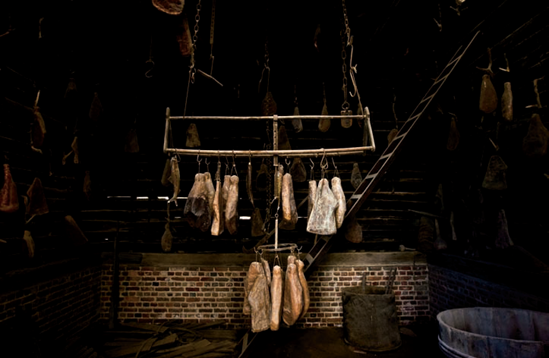
Figure 8.5. The Salthouse, where meats and fish were preserved (see C on the map). Taken at ISO 800, f/5.6, 1/60 second with a 20mm lens.
This is a working, cultivated area that illustrates the farming techniques Washington used that were advanced for the time (see Figure 8.6). Next door is the Mount Vernon Wharf, where visitors who arrive by boat disembark (see Figure 8.7).
Plan on a lot of walking and learning while at Mount Vernon, and having an occasional run-in with a contemporary of Washington's from the late 1700s, such as one of his farm's slaves, a government associate, or a hired worker.
Travel relatively lightly because of the amount of walking involved here. In general, you have plenty of light, so a tripod isn't necessary, which reduces your load.
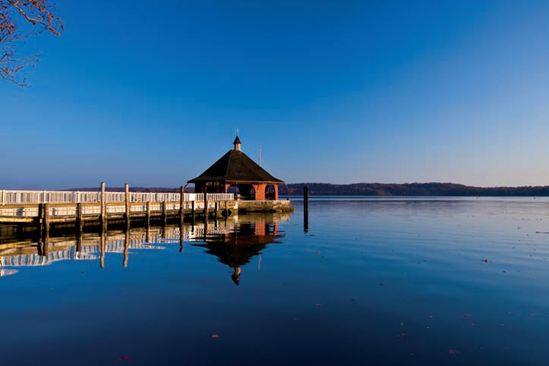
Figure 8.8. The Mount Vernon Wharf, next to the Pioneer Farmer site (see D on the map). Taken at ISO 100, at f/22, 1/4 second with a 24mm and a tripod.
The kinds of photos you can take at Mount Vernon vary widely, but a lot of the photographs here can be made using focal lengths of 24–70mm. You can get rather close to many of the subjects here, so long lenses aren't all that necessary. An exception can be made for the western side of the mansion, where a long lens such as 200mm works well to compress the entire scene — but this, too, could be photographed with a wider lens to show the vast size of the Bowling Green (refer to Figure 8.3).
Keep a strong subject in mind as you photograph here, and adjust your camera settings accordingly to your subject matter. For example, if you are photographing the mansion and the land around it, use a higher aperture to get the entire scene in focus. If, however, you are focusing on a scene inside one of the outbuildings (refer to figures 8.4 and 8.5), using a lower aperture value such as f/4 will limit your depth of field so that only the subject is in focus, which helps to create a stronger photograph. (Using your camera's Aperture Priority mode is therefore a good idea.)
Within these buildings, the exposures may get a bit tricky because of the strong contrast. Try to adjust your exposure based on an area that is neither very bright nor very dark. Your camera's full auto or Program modes may be easily fooled by the contrast in these areas. By using a Priority mode such as Aperture Priority combined with exposure compensation you can fine-tune your exposure to the scene. If the picture looks too bright, reduce the exposure. Conversely, if it is coming out too dark, increase the exposure.
Also, white balance will affect your photos to a large degree. Using Auto white balance may result in photos that are bit too cold and blue. Try using the Cloudy or Shady setting to capture warmer images.
Be sure to keep your flash off inside the outbuildings, as well. Try to use the natural light whenever possible. Many of the outbuildings have windows and beautiful light flowing through them at all times (see Figure 8.8).
Sunlight shows off the many areas of Mount Vernon differently — taking advantage of this with your compositions is a wise move.
Because of the sheer variety of things to photograph, there's always something that can be done no matter what time of the day. Morning and evening light are great to shoot the eastern-and western-facing sides of the mansion as well as to get interesting light at the farm and surrounding fields. Getting here early and planning a full day is a good idea. Because there's a food court, museums, and in general plenty to do and see, you can easily stay the entire day — meaning you can take advantage of a lot of different light (see Figure 8.9).
The weather can present a challenge here. Of course, if you are lucky enough for a winter snowfall, there can be rare opportunities to get some interesting images. Because most of the locations are outdoors, pack some rain clothes in the car and maybe something to cover your camera in case the skies let loose.
Tip
A simple trash bag has saved many a camera from rain and also helped to create some great rainy day images.
Because you have to work around the hours that Mount Vernon is open to the public, night and low-light options are limited. However, you can plan your trip around the special candlelit tours of Mount Vernon offered in November and December.
Be sure to check out the many events going on within the grounds of Mount Vernon for ideas of things to photograph. For example, there is often a blacksmith working in the blacksmith's shop, and many other activities continually going on throughout the year.
Tip
Check out www.mountvernon.org for an up-to-date calendar of the estate's activities. If you live near Mount Vernon, the annual pass for $25 is an absolute bargain. For only $10 more than the daily admission, you can come here to photograph as often as you want for a year.


